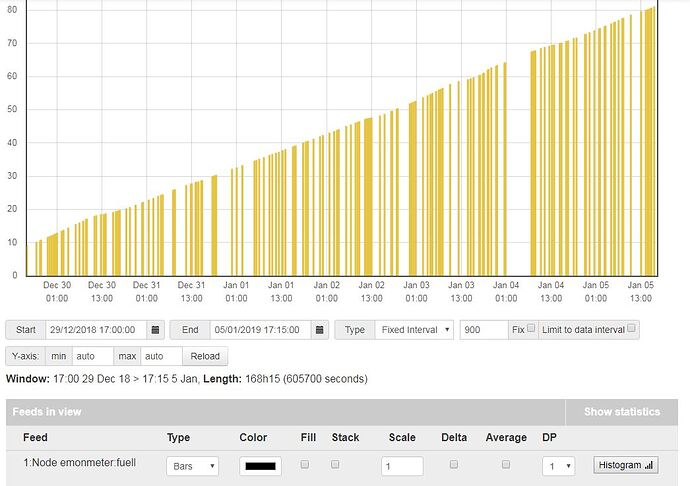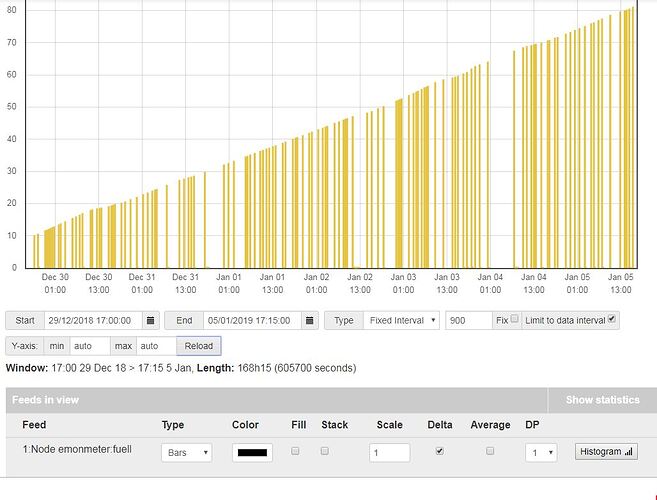Hi all,
I just recently installed my emonPi and I could use some help with the “delta” feature of graphs. For now the only node I have is a custom arduino-based node that reports water and fuel consumption over the radio.
The node reports the total index to date (and restarts at zero whenever the arduino is restarted). It sends data at most once every 30s, and only if the index has changed.
I have those two feeds:
For the inputs I simply used “log to feed” and PHPFINA Fixed in 30s
What I am trying to do is create graphs that show hourly and/or daily fuel and water consumption. I tried quite a few settings in the Graph view but I am not getting anywhere… mostly because I don’t understand precisely what the expectations are w.r.t. the underlying data.
Here are two sample graphs: the default one for “water”, and the same graph after selecting “delta” and reloading; a couple bars do show a correct delta, but most of them apparently show “index - 0”.
I assume that missing values are a problem - how would you recommend that I set up my inputs, feed and graphs to be able to create nice graphs showing consumption over arbitrary periods (e.g. anywhere from per minute to per month)?
Is there somewhere a detailed explanation of how the graph options (“Type”, the number next to “Type”, “Fix” checkbox, “Delta”, “DP”…) are used to drive the processing?
I read about the Wh accumulator, however
a) I am reporting liters (water) and milliliters (fuel) here, not too sure how the spike filtering will behave here?
b) The comment mentions “daily kWh data” - will I be able to create deltas for arbitrary intervals from that feed?
If needed I can modify the Arduino program to avoid gaps and send the index at a fixed period; I can’t prevent the restart to 0 when the arduino is reset though.
Any suggestion welcome!
Franck
Default graph:
With “deltas” selected:
Sample raw water data (arduino in debug mode → period may not be 30s):
1546691400, null
1546692300, null
1546693200, null
1546694100, 746
1546695000, null
1546695900, 774
1546696800, 774
1546697700, null
1546698600, 807
1546699500, 822
1546700400, null
1546701300, null
1546702200, 825
1546703100, null

